2023. 3. 17. 00:58ㆍ카테고리 없음
안녕하세요! 건강알리미입니다~

오늘은 ' 오스굿슐라터병[ osgood-schlatter disease ] '에 대해 알아보고 정리하겠습니다!
오스굿슐라터병
[ osgood-schlatter disease ]
-요약 -
급격한 성장에 비해 뼈 조직이 아직 덜 튼튼한 상태에서 무릎 아래가 툭 튀어나오거나 통증이 생기는 소아청소년기 질환


정의
무릎 바로 아래, 정강뼈 위쪽의 앞부분이 툭 튀어나오고, 누르면 아프며, 운동을 한 뒤에 통증이 생기는 질환입니다.
초등학교 고학년에서 중학교 저학년 사이에 흔히 발생하며, 아무래도 활동량이 많은 남자 아이에게서 더 흔합니다.
증상의 정도는 신체 활동량과 비례하고, 무릎 양쪽 또는 한쪽에 발생합니다.


오스굿슐라터병의 발생 부위
원인
오스굿슐라터병이 생기는 부위는 넓적다리의 앞쪽 근육이 붙는 자리로 무릎을 펴게 하는 아주 큰 힘이 작용한다. 어린이가 성장하여 사춘기에 접어들면서 몸집도 커지고 근육도 강해지지만, 아직 뼈 조직은 그만큼 튼튼해지지 않은 불균형 상태에서 슬개건이 당겨지는 반복적인 자극이 주어져 생기는 질환이다.
증상
무릎 바로 아래, 종아리뼈 위쪽의 앞부분이 툭 튀어나오고 활동 증가와 비례한 병변 부위의 압통이 있습니다
진단/검사
병력청취와 단순 방사선촬영 검사로 진단
단순 방사선촬영 검사를 해 보면 튀어나온 부분에 뼈 조각이 떨어져 있는 것이 보이기도 합니다.

오스굿슐라터병의 증상
오른쪽 무릎에 나타난 오스굿슐라터병의 단순방사선촬영
치료
통증을 일으키는 운동을 삼가면 증상은 대부분 저절로 없어진다.
통증이 아주 심한 경우에는 진통제를 복용하거나 일시적으로 보조기 등을 사용하여 무릎을 보호하면 증상이 빨리 없어지는 데 도움이 됩니다. 뼈 조각이 떨어져 나온 채로 있다가 성인이 되어서 격렬한 운동을 하게 되면 통증이 생기는 경우가 드물게 있을 수 있으며, 활동에 많은 지장을 주면 수술을 통해서 뼈 조각을 제거하기도 한다.
경과/합병증
대개 수 개월 또는 수 년 동안 지속된 후 서서히 완화된다. 증상이 없어진 뒤에도 튀어나온 뼈 부위는 그대로 남게 되며, 심하면 딱딱한 바닥에 무릎 꿇고 앉기가 힘들어진다.
만화
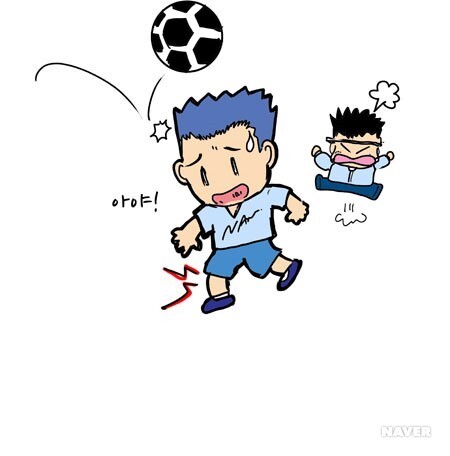

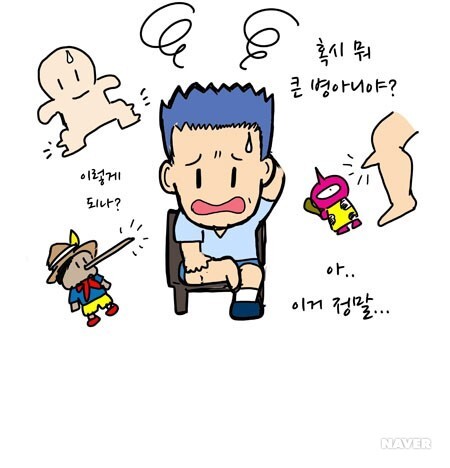
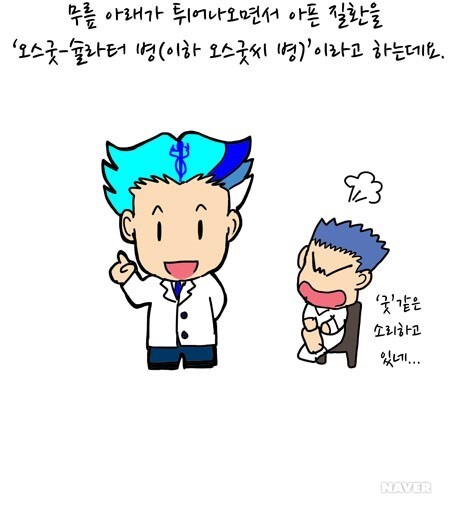







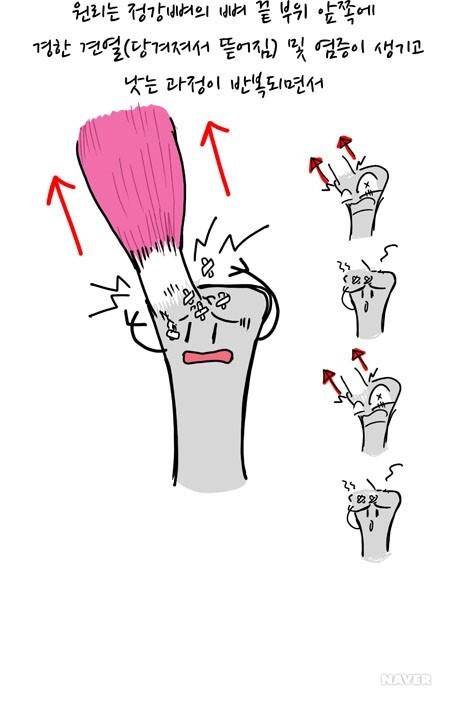








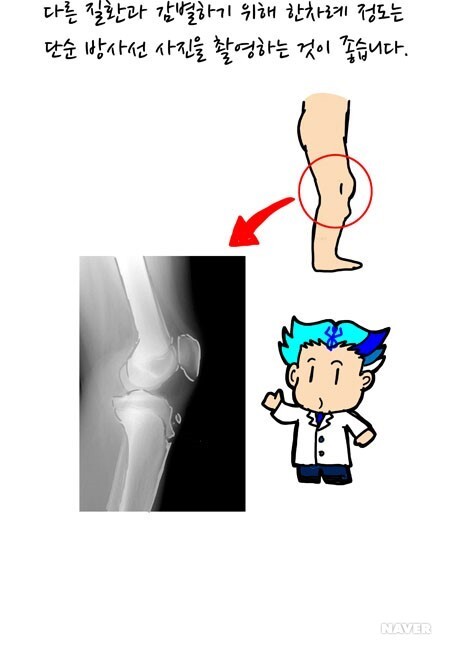
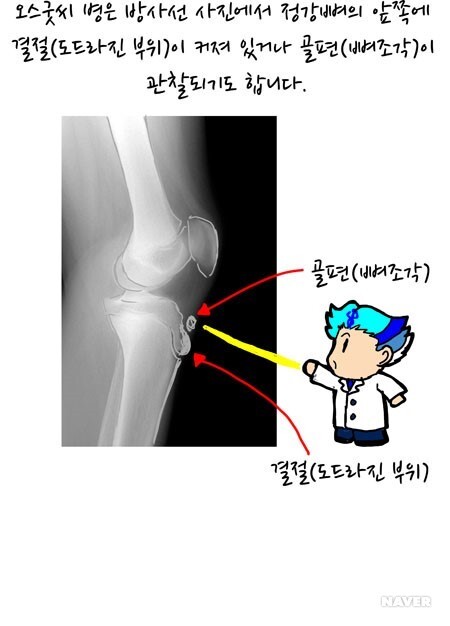




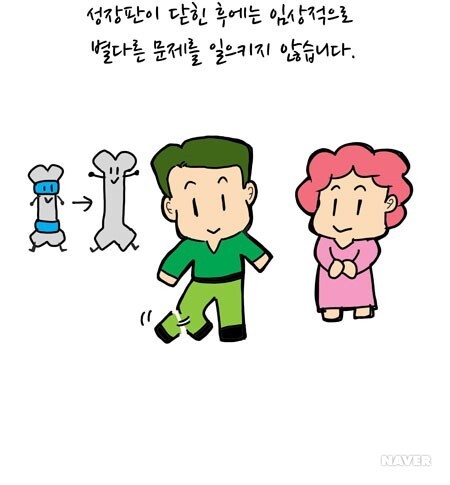
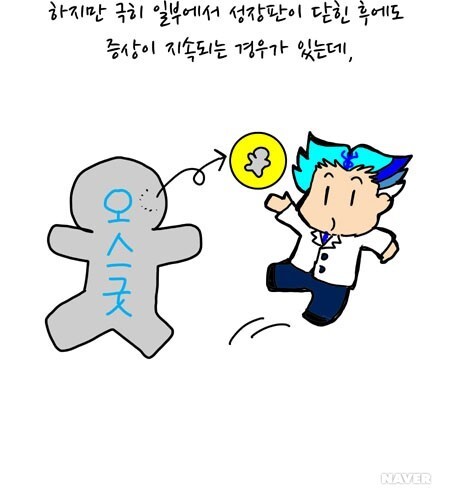


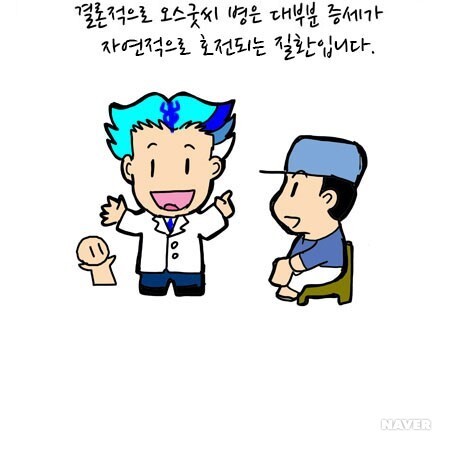
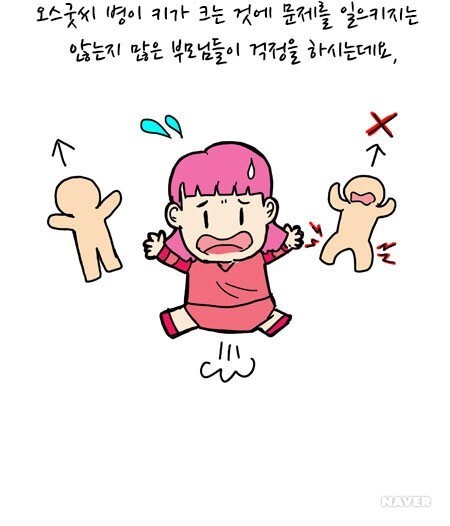


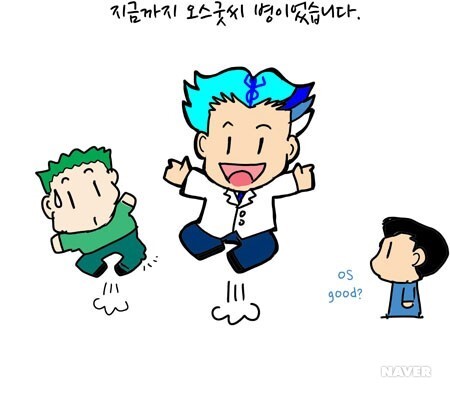
문제
A 14-year-old boy presents to the office for a checkup. He is well-nourished and meets all developmental milestones. He denies any complaints, and you offer him counseling on adolescent issues. On examination, he appears to be a normal, healthy teenager. The only significant finding is the bilateral swelling of the tibial tuberosities. When asked about them, the patient denies trauma and states they are sore, especially when he runs or squats. Which of the following is the underlying cause of this finding?
|
|
Explanation:
Correct answer E: Osgood-Schlatter disease is a chronic inflammation of the patellar tendon leading to increased tension on the tibial tuberosity. Irritation to the patellar tendon is due to hypertonic quadriceps muscles and increased bone growth during adolescence. The tension leads to increased bone remodeling at the point of attachment on the tibia, creating a hypertrophic bone lesion (traction apophysitis) on the anterior aspect of the tibia. This area creates a painful, swollen lesion on the tibial tuberosity (see image).
Image: Area of pain and inflammation in Osgood-Schlatter's disease. By Lecturio
Knee pain is the most common presenting symptom, especially when engaging the quadriceps muscle group. Adolescent males are the most commonly affected. Treatment revolves around symptom alleviation with non-steroidal anti-inflammatory drugs (NSAIDs) and stretching. Due to its bilateral nature, the lack of any other clinical findings, and the demographics of this patient, Osgood-Schlatter disease is the most likely diagnosis.
Option A: Osteopetrosis, also known as marble bone disease, is characterized by thickened bones due to defective bone resorption. Homeostasis between resorption and deposition is essential for strong bone formation. Defective osteoclasts cause osteopetrosis: bone is deposited by osteoblasts but is not resorbed by osteoclasts due to the inability to create the acidic environment necessary for bone resorption. Long-term complications include pathologic fractures and replacement of bone marrow with defective bone material. This typically occurs to the entire bone, not a hypertrophied segment such as in this patient.
Option B: Osteitis fibrosa cystica is a bone disorder caused by hyperparathyroidism or ectopic production of parathyroid hormone. Increased levels of parathyroid hormone lead to overstimulation of bone resorption. This causes the bones to weaken, leading to bone cysts known as brown tumors and pathologic fractures. Other symptoms will result from hypercalcemia: kidney stones, abdominal pain, and mental status changes (this can be remembered by using the phrase: moans, bones, groans, and psychiatric overtones). Bones will have increased cortical lucency on X-ray. This patient is not presenting with systemic signs of hyperparathyroidism or pathologic fracture, making this diagnosis unlikely.
Option C: Paget disease of the bone is a disease of localized dysfunctional bone remodeling. There are three stages of Paget disease: lytic stage (characterized by increased osteoclastic activity), mixed stage (seemingly normal bone remodeling), and sclerotic stage (characterized by increased osteoblastic activity). The bones will have a "mosaic pattern," and long bone fractures known as "chalk-stick" fractures can be seen. Additional symptoms and findings will be based on the stage of the disease the patient who presents with it. However, at every stage, the bones will be weak and pathologic fracture is possible. This patient is not exhibiting signs of this disease, making it an unlikely diagnosis.
Option D: Ewing sarcoma is a malignant tumor of bone, most commonly seen in young boys. This tumor is extremely aggressive and metastasizes early. It can be found most commonly in the diaphysis of long bones, such as the femur. The translocation t(11;22) can be seen in most cases of Ewing sarcoma. This translocation produces a fusion protein known as EWS-FLI1. While this patient falls within the demographic of Ewing sarcoma, the bilateral nature of the presentation makes this extremely unlikely.
Learning objective: Osgood-Schlatter disease is a common disease of growing children characterized by prominent tibial tuberosities, knee pain, and quadriceps hypertonicity. Treatment includes the use of a patellar strap, stretching, and strengthening exercises.
|
|
Related Videos:
|
|
Book References:
First Aid for the USMLE Step 1 (2022, 32nd ed): 471
First Aid for the USMLE Step 1 (2021, 31st ed): 473
First Aid for the USMLE Step 1 (2020, 30th ed): 461
First Aid for the USMLE Step 1 (2019, 29th ed): 453
First Aid for the USMLE Step 1 (2018, 28th ed): 344
|

참고자료
오늘은 여기까지 정리하겠습니다!
감사합니다!
